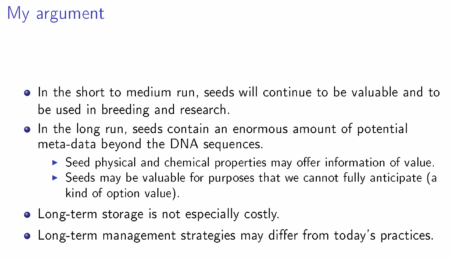Douglas Gollin, Professor of Development Economics at the University of Oxford will speak about genebanks tomorrow, and you really mustn’t miss it. The talk’s title? “In Praise of Seed Morgues.” See what I mean?
LATER: The recording is on the GROW webpage. And here’s a spoiler…

